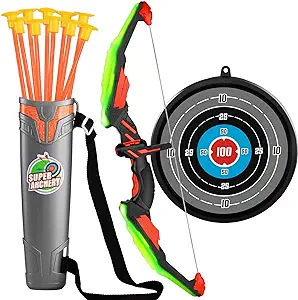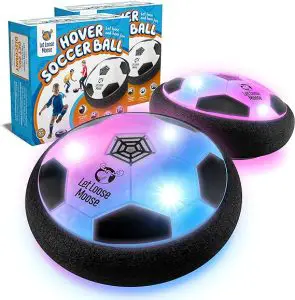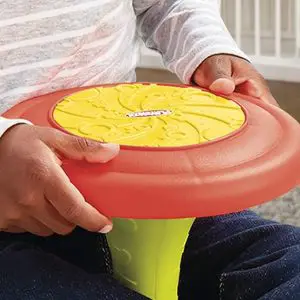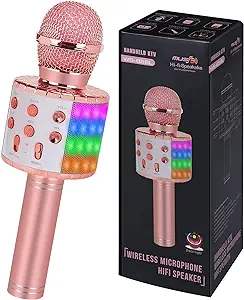
Find Amazon Keywords for Free its method
Finding Amazon keywords for free involves some research and analysis. Here are certain methods you can use:
Table of Contents
ToggleAmazon Autocomplete:
When you start typing a query into the Amazon search bar, it suggests completed phrases. These suggestions are based on popular searches, making them valuable keywords.
Amazon Related Searches:
Scroll down to the bottom of a product page on Amazon, and you’ll find a section titled “Customers who bought this also bought” or “Related to items you viewed.” These related searches can give you additional keyword ideas.
Amazon Best Sellers:
Explore the Amazon Best Sellers list in different categories. This will give you insights into what products are currently popular. Look at the product titles and descriptions to identify relevant keywords.
Competitor Analysis:
Analyze your competitors’ product listings. Look at their titles, bullet points, and product descriptions. Identify the keywords they are targeting and consider incorporating similar ones into your listing.
Amazon Search Term Report (for Sellers):
If you are a seller on Amazon, you can access the Search Term Report in your Seller Central account. This report provides data on the search terms that customers have used to find and purchase your products.
Use Keyword Tools:
There are several free and paid keyword research tools that can help you identify relevant keywords. Tools like Sonar, Helium 10’s Magnet, and MerchantWords offer insights into search volume and competitiveness for specific keywords.
Google Keyword Planner:
While not specific to Amazon, Google’s Keyword Planner can provide insights into search volumes and variations for certain keywords. This information can be useful for understanding broader trends and identifying potential keywords.
Social Media and Forums:
Check social media platforms and forums related to your product niche. Pay attention to the language customers use when discussing products. This can provide valuable insights into the keywords they might use when searching on Amazon.
Remember to optimize your product listing with relevant and high-performing keywords. Balancing relevance and search volume is crucial for a successful Amazon listing. Keep in mind that algorithms and tools may change, so it’s essential to stay updated on the latest methods and strategies for keyword research.
LCD Writing Tablet 10 Inch, Toys for 3 4 5 6 7 8 9 10 Year Old Boys Girls, Colorful Doodle Board Drawing Tablet, Gift for Boys Toddlers Age 3-12 Years, Memo Board, Drawing Pads with Lanyard (Pink)
Amazon keywords free
It’s important to note that using someone else’s intellectual property, such as trademarks or copyrighted terms, as keywords for your products on Amazon may be against Amazon’s policies. Additionally, using trademarked terms without permission could lead to legal issues.
That being said, when you’re looking for keywords to improve your product’s visibility on Amazon, consider focusing on relevant and descriptive terms related to your product. Use terms that potential customers are likely to use when searching for products similar to yours. Think about the features, benefits, and use cases of your product, and incorporate those into your keywords.
Here are some general tips for finding effective keywords on Amazon:
Use Amazon’s Autocomplete Feature:
Start typing relevant words in the search bar, and see what suggestions come up. These are commonly searched terms that you can consider incorporating into your keywords.
Analyze Competitor Listings:
Look at successful products in your niche and analyze their product listings. Take note of the keywords they use and consider incorporating similar ones into your own listings.
Utilize Amazon’s Search Terms Field:
Amazon provides a Search Terms field when creating or editing a product listing. Use this space to include additional relevant keywords that might not fit naturally in your product title or description.
Consider Synonyms and Variations:
Think about different ways people might refer to your product. Add variations, synonyms, and different spellings of your major keywords.
Use Tools for Keyword Research:
There are various online tools that can help you identify relevant keywords for your Amazon listings. Some examples include Helium 10, Jungle Scout, and MerchantWords.
Always make sure to comply with Amazon’s policies and guidelines when selecting keywords for your product listings. It’s important to focus on providing accurate and relevant information to potential customers to improve their shopping experience on the platform.
TEMI Kids Bow and Arrow Set – LED Light Up Archery Toy Set with 10 Suction Cup Arrows, Target & Quiver, Indoor and Outdoor Toys for Children Boys Girls
Amazon keywords for books
Choosing effective keywords for your book on Amazon is crucial for improving its discoverability. When selecting keywords, consider relevant terms that potential readers might use when searching for books similar to yours. Here’s a list of general and genre-specific keywords that authors often use on Amazon:
General Keywords:
Fiction Non-fiction
Novel Memoir
Biography Mystery
Thriller Romance
Science Fiction Fantasy
Genre-Specific Keywords:
Historical Fiction Crime
Horror Adventure
Chick Lit Young Adult
Children’s Book Self-Help
Business Travel
Themes and Topics:
Love Story Friendship
Time Travel Space Exploration
Leadership Personal Development
Cooking Mindfulness
Parenting Fitness
Setting Keywords:
Urban Rural
Small Town Historical
Futuristic Otherworldly
Dystopian
Target Audience:
Men Women
Teens Children
Young Adults Parents
Seniors
Format Keywords:
E-book Paperback
Hardcover Audiobook
Kindle
Author Keywords:
Include your name and variations of it
Series Keywords:
If your book is part of a series, include series-related terms
Comparisons to Popular Works:
If your book is similar to a well-known work, include relevant terms
Descriptors:
Emotional Inspirational
Gripping Funny
Suspenseful Thought-provoking
Award-winning
Remember, the key is to choose keywords that accurately reflect the content of your book and resonate with your target audience. Experiment with different combinations, and monitor the performance of your keywords to refine your strategy over time. Additionally, take advantage of Amazon’s backend keyword fields to include additional terms that might not fit in the title, subtitle, or book description.
Let Loose Moose Hover Soccer Ball, Set of 2 Light Up LED Soccer Ball Toys, Safe for Indoor Play, Toys for Boys 5-7, Gifts for Boys, Stocking Stuffers for Kids, Fun Gifts, Gifts for 8 Year Old Boys
Amazon keyword ranking
Amazon keyword ranking refers to the position of a product listing in the search results when a specific keyword is entered by a user on Amazon. Achieving a high keyword ranking is crucial for sellers as it can significantly impact the visibility and discoverability of their products, ultimately influencing sales. Here are some key points to consider for understanding and improving Amazon keyword ranking:
Relevance: Amazon’s search algorithm prioritizes relevant products. Ensure that your product listing includes accurate and descriptive information, including relevant keywords in your title, bullet points, and product description.
Keyword Research: Conduct thorough keyword research to identify the most relevant and high-traffic keywords for your product. Tools like Amazon’s own search bar, as well as third-party tools like Helium 10, Jungle Scout, or MerchantWords, can help you discover relevant keywords.
Optimized Product Title: The product title is one of the most crucial elements for keyword ranking. Include important keywords naturally in your title while ensuring it remains readable and enticing for potential buyers.
Backend Keywords: Amazon provides a backend search terms field where you can include additional keywords that may not fit into the visible parts of your listing. Use this space wisely by adding relevant keywords that potential customers might use to find your product.
Bullet Points and Product Description: Incorporate keywords naturally into the bullet points and product description. Provide valuable information about your product that helps customers make informed decisions.
Customer Reviews and Ratings: Positive reviews and high ratings can indirectly influence keyword ranking. Satisfied customers may use keywords in their reviews, contributing to the overall relevance of your product.
Competitor Analysis: Monitor the listings of your competitors who rank well for your target keywords. Analyze their strategies and identify areas where you can improve your own listing.
Amazon Advertising: Utilize Amazon’s advertising platform, such as Sponsored Products and Sponsored Brands, to boost visibility and increase the chances of ranking higher for specific keywords.
Product Images: While not a direct ranking factor, high-quality images can improve your click-through rate and conversion rate, indirectly affecting your keyword ranking.
- Regular Updates: Keep your product listings up-to-date. Amazon’s algorithm may reward active and well-maintained listings with better rankings.
Remember that achieving and maintaining a high keyword ranking requires ongoing optimization and monitoring. Amazon’s search algorithm is dynamic, so it’s essential to adapt your strategy based on changes in customer behavior and Amazon’s policies.
Playskool Sit ‘n Spin Classic Spinning Activity Toy for Toddlers Ages Over 18 Months (Amazon Exclusive)
CONCLUSION:
If you’re looking for information or a conclusion about free keywords related to Amazon, I can provide some general insights.
Using relevant keywords is crucial for online visibility, including on platforms like Amazon. While there are free keyword tools available, it’s important to note that the effectiveness of these tools can vary. Some popular free keyword tools include Google Keyword Planner, Ubersuggest, and Keywords Everywhere.
Conclusion:
Research is Key: Proper research is essential to identify the most relevant and high-impact keywords for your Amazon products or listings.
Free Tools: While there are free keyword tools available, they may have limitations compared to paid alternatives. However, they can still be valuable for gaining insights into search trends and competition.
Use a Combination: Combining information from multiple sources and tools can provide a more comprehensive understanding of relevant keywords.
Regular Updates: Keyword trends can change, so it’s crucial to regularly update your keyword strategy to stay competitive.
Quality Content: Ultimately, creating high-quality and relevant content around your chosen keywords is crucial for success on Amazon.
Luyiilo Smart Watch for Kids, with 26 Puzzle Games, Touch Screen, HD Camera, Alarm Clock, Toys for Ages 4-12 Years Old.Birthday Gift for Boys Girls (Pink)
FAQ:
How do I find the right keywords for Amazon?
Finding the right keywords for Amazon is crucial for improving the visibility and discoverability of your products. Here are some steps to help you identify relevant keywords:
Brainstorm: Start by brainstorming a list of keywords that you think potential customers might use to search for products similar to yours. Consider synonyms, variations, and different phrasings.
Competitor Analysis: Analyze your competitors’ product listings. Identify the keywords they are using, especially those in the product titles, bullet points, and product descriptions. You can learn more about what is effective in your niche by doing this.
Amazon Autocomplete: Use Amazon’s autocomplete feature to get suggestions as you type in the search bar. This can provide you with popular and relevant keywords.
Amazon Search Terms Report: If you already have products listed on Amazon, review your search terms report in Seller Central. This report provides information on the actual search terms that led customers to click on your products.
Use Keyword Tools: There are several third-party keyword research tools that can help you identify relevant keywords for your products. Some popular ones include MerchantWords, Helium 10, and Jungle Scout. These tools can provide insights into search volumes, competitiveness, and related keywords.
Google Keyword Planner: While Amazon has its own search ecosystem, Google Keyword Planner can also provide valuable insights into search volumes and related terms. This can be particularly helpful if your products have a broader market.
Amazon Search Term Limits: Be mindful of the character limits for search terms in your product listing. Focus on the most important and relevant keywords. Amazon has specific guidelines on character limits for titles, bullet points, and product descriptions.
Long-Tail Keywords: Use less competitive and more targeted long-tail keywords. These can help you target a more niche audience.
Monitor and Update: Amazon’s algorithms and customer search behavior may change over time. Regularly monitor your product performance and update your keywords accordingly.
Customer Reviews: Look at customer reviews for your products and similar products. Customers often use specific language that can be valuable for keyword research.
Remember that finding the right keywords is an ongoing process. It’s essential to stay updated on market trends, customer preferences, and changes in search algorithms to continually optimize your product listings.
Toys for Girls Karaoke Microphone – Portable Wireless Bluetooth Karaoke Mic Machine with Flashlights, 3 4 5 Year Old Girl Birthday Gifts,Kids Toys for 6 7 8 9 10 Year Old Girl Stuff Teen
What is Amazon keywords?
In the context of Amazon, keywords refer to specific words or phrases that are relevant to a product and are used to optimize product listings for search engines within the Amazon platform. When sellers list their products on Amazon, they have the opportunity to include keywords in their product titles, bullet points, product descriptions, and backend search terms.
These keywords help Amazon’s search algorithm understand the nature of the product and match it with relevant customer search queries.
Optimizing product listings with relevant and high-performing keywords is crucial for improving visibility and search ranking on Amazon. The goal is to use keywords that potential customers are likely to use when searching for products similar to yours. Sellers often conduct keyword research to identify the most relevant and effective keywords for their products.
Amazon’s search algorithm takes into account various factors, including the relevance of the product to the search query, product ratings and reviews, and overall sales performance. By strategically incorporating relevant keywords into product listings, sellers aim to enhance their product’s discoverability and attract more potential customers.
How do I choose keywords for my Amazon campaign?
Choosing the right keywords for your Amazon campaign is crucial for reaching your target audience and maximizing the effectiveness of your advertising efforts. Here are some steps to help you select relevant keywords:
Understand Your Product and Audience:
Clearly define your product and its features.
Identify your target audience and understand their preferences, needs, and behaviors.
Brainstorm Relevant Terms:
List all possible keywords related to your product.
Include variations, synonyms, and common misspellings.
Consider both short-tail and long-tail keywords.
Use Amazon’s Search Term Report:
Analyze your existing data if you’ve been selling on Amazon. The Search Term Report provides insights into the terms customers have used to find and purchase your products.
Competitor Analysis:
Look at the keywords your competitors are targeting.
Identify high-performing keywords in your niche.
Amazon’s Auto-Suggest Feature:
Use the search bar on Amazon to see auto-suggested keywords related to your product.
This can provide insights into popular and relevant search terms.
Keyword Tools:
Leverage keyword research tools like Amazon’s own advertising console, or third-party tools such as MerchantWords, Helium 10, or Jungle Scout.
These tools can help you discover new keywords, estimate search volumes, and analyze competition.
Filter and Prioritize:
Weed out irrelevant or low-performing keywords.
Prioritize keywords based on relevance, search volume, and competition.
Group Keywords:
Organize your keywords into logical groups. This helps in creating targeted ad campaigns and improving ad relevance.
Monitor and Adjust:
Regularly review the performance of your campaigns.
Identify high-performing and underperforming keywords.
Adjust your keyword strategy accordingly.
Negative Keywords:
Include negative keywords to prevent your ads from showing for irrelevant searches.
This helps in focusing your budget on the most relevant audience.
Experiment with Match Types:
Amazon offers different match types (Broad, Phrase, Exact).
Experiment with these match types to refine your targeting and control the reach of your ads.
Budget Considerations:
Keep your budget in mind when selecting keywords.
Focus on a mix of high and low competition keywords to optimize your spending.
Remember that keyword selection is an ongoing process. Regularly review and update your keyword list to adapt to changes in customer behavior and market trends.
LEGO Minecraft The Frozen Peaks 21243, Cave Mountain Set with Steve, Creeper, Goat Figures & Accessories, ICY Biome Toy for Kids Age 8 Plus Years Old
How many keywords should I use for Amazon?
There isn’t a specific number of keywords that applies universally to all Amazon listings, as the optimal number depends on various factors such as the type of product, competition, and customer search behavior. However, here are some guidelines to help you choose the right number of keywords:
Relevance: Focus on relevant keywords that accurately describe your product. Use terms that potential customers are likely to search for when looking for products like yours.
Amazon Keyword Limit: Amazon has a backend search term field where you can enter relevant keywords for your product. As of my last knowledge update in January 2022, Amazon allows up to 250 bytes of characters for search terms. It’s important to use this space wisely, ensuring that you include a variety of relevant keywords.
Long-Tail Keywords: Incorporate long-tail keywords, which are more specific and typically have lower competition. These can assist you in connecting with a more niche market.
Competitor Analysis: Research competitors and see which keywords they are targeting. This can provide insights into popular and relevant terms within your product category.
Amazon Keyword Tools: Utilize Amazon keyword research tools to identify relevant and high-performing keywords. Tools like MerchantWords, Helium 10, or the Amazon Keyword Planner can help you discover keywords with high search volume.
Monitor and Adjust: Regularly monitor your product’s performance and adjust your keyword strategy accordingly. If certain keywords aren’t performing well, consider replacing them with new ones.
Balanced Approach: Aim for a balance between broad and specific keywords. While broad keywords can attract a larger audience, specific keywords can attract more qualified leads.
Remember that Amazon’s algorithm takes into account the relevance of your product to customer searches. It’s not just about stuffing as many keywords as possible; rather, focus on providing accurate and useful information about your product. As Amazon’s policies and algorithms may change over time, it’s advisable to check for any updates or changes in guidelines related to keywords on the official Amazon Seller Central platform.
The Super Mario Bros. Movie – 5 Inch Action Figures Series 1 – Mario Figure with Plunger Accessory






